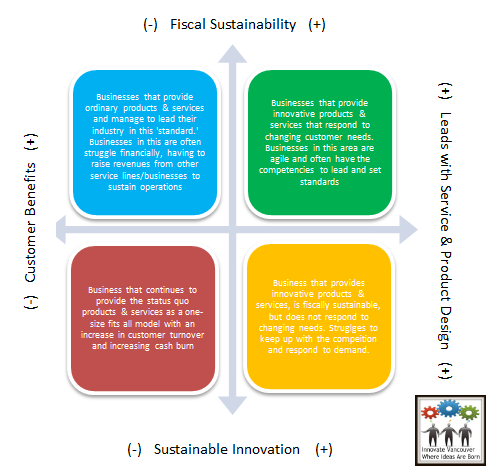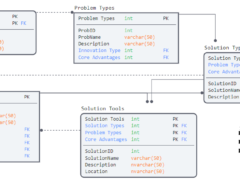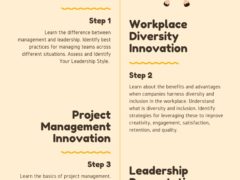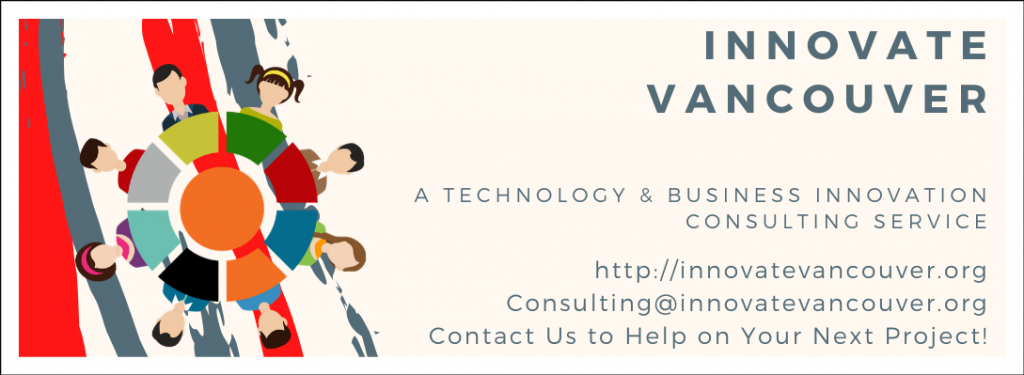The modern corporation coexists with others in an ever changing and dynamic landscape. In order to remain a viable and sustainable business leadership must co-create a shared vision that identifies & leverages innovation, opportunities, skills, and resources. Even when these exist, an unlimited wealth of knowledge and business tools will not change a business’ path for the better unless the prerequisite culture, architecture, values, and competencies are already in place. It is not the purpose of this article to highlight how to build these prerequisites but instead to illuminate that the execution of these assets requires a systemic approach in order to be successful.
Where industries see separate business models and context dependent tools I see themes, trends, and overlapping inter-dependencies. Similarly, where history is often viewed as a linear and iterative progression of ideas, lessons, and platforms I see leaps and starts, as well as radical departures upon which new (and often radical) paradigms are realized. Learning and growth is less about linear progression then it is about connecting the dots and bringing new ideas into creation.
 Although I am passionate about thinking outside the box, challenging sacred cows (business beliefs that remain unchallenged, with histories supporting them that is no longer remembered), and achieving the impossible….I recognize that not everyone is. These traits are often viewed in isolation; distinguishing the achievement of the impossible from trying something new. Although in isolation these competencies may add value in a captured market setting – this becomes less likely in environments that involve perpetual change OR in business environments that focus on linear thinking.
Although I am passionate about thinking outside the box, challenging sacred cows (business beliefs that remain unchallenged, with histories supporting them that is no longer remembered), and achieving the impossible….I recognize that not everyone is. These traits are often viewed in isolation; distinguishing the achievement of the impossible from trying something new. Although in isolation these competencies may add value in a captured market setting – this becomes less likely in environments that involve perpetual change OR in business environments that focus on linear thinking.
Since even the stability (or routes) of funding changes in captured markets its unclear if a true captured (and thus unchanging) market even exists. This is because customers continue to demand more. Even in captured markets where available products & services is pre-specified and for free (paid by insurance, government funding, etc.) the customer continues to demand improvements.
Even more problematic is the trend where customers take the products or services for granted; effectively becoming passive recipients of its benefits, only to become angry or dissatisfied when the product/service boundaries are encountered.
These scenarios highlight why relationships and customer relationship management (CRM) is so important; but do not explain how to avoid reacting and move the organization towards a more proactive approach. This is because customer relationship management in today’s organization often emphasizes either quantitative or qualitative drivers. Not both. Reactive symptom management thus becomes the norm, and not the exception. But it doesn’t have to be this way.
Business as usual – may need to change.
Business as usual may need to change. This includes:
⦁ Culture: The traditions, beliefs, and behaviours that determine how employees interact with one another.
⦁ Areas ofcommitment: The role models, documentation, and systems in place to support reinforcement of investment.
⦁ Communication: The sharing of transparent and consistent information across the organization.
⦁ Common sense & assumptions: The alignment of the organization’s experience with what is observed in the surrounding environment.
⦁ Competencies & skills: The development of skills and competencies that are needed to proactively respond to changes in the industry.
⦁ Resources: The tools, resources, and investment of the organization to insure change, and the development of key innovation competencies, is successful.
Change requires proactively observing, learning, and adjusting based on feedback. Understanding where you are going is just as important as understanding how to get there.  Note, internal insistence for an outside expert or consultant to facilitate the change management process can often serve as to reinforce existing silos and stall the process. So tread carefully when this request is made in order to better understand the stakeholder’s priorities, questions, and concerns regarding the process. Although external consultants can be helpful for organizations that are facing inertia, the process of external consultation can diminish accountability, negatively impact execution of the plan, and decrease the likelihood of the competencies being successfully integrated into the organizational culture.
Note, internal insistence for an outside expert or consultant to facilitate the change management process can often serve as to reinforce existing silos and stall the process. So tread carefully when this request is made in order to better understand the stakeholder’s priorities, questions, and concerns regarding the process. Although external consultants can be helpful for organizations that are facing inertia, the process of external consultation can diminish accountability, negatively impact execution of the plan, and decrease the likelihood of the competencies being successfully integrated into the organizational culture.
Michael Csik (2014) identifies four stages for developing an innovative business model:
- Initiation: Analyze the environment.
- Ideation: Identifying patterns and themes.
- Integration: Sketch the business model that could seize the opportunities identified.
- Implementation: Implement, role model, and reinforce the dedicated resources in order to realize the vision.

Leading and defining industry trends come easiest to those organizations that are comfortable with:
⦁ Innovation: Innovation is a new idea, or more-effective device or process. Innovation can be viewed as the application of better solutions that meet new requirements, unarticulated needs, or existing market needs.
⦁ Agility: The organization’s ability to rapidly respond to change, respond to customer needs, and quickly take advantage of new opportunities.
⦁ Continual customer development tools & processes: A process of continually testing product & service assumptions against the market. Using the information acquired to create iterative improvements that realize additional value(s) for the customer.
For organization’s beginning the journey towards industry & innovation leadership the process begins with removing the silos and clarifying (or challenging) the assumptions that have held back the organization’s potential.
Share your thoughts on how your organization has moved forward despite obstacles and an ever changing environment.
Travis Barker, MPA GCPM
Innovate Vancouver
[email protected]
Reference:
Csik, M. (2014, December 2). 55 Business Models to Revolutionize your Business by Michaela Csik. Retrieved April 18, 2016, from http://www.slideshare.net/jindrichweiss/55-business-models-to-revolutionize-your-business-by-michaela-csik
Sazama, F. (2016). Canvas4Change. Retrieved April 17, 2016, from http://frank-sazama.de/
Innovate Vancouver is a business development & consulting service and technology startup located in Vancouver, BC. Contact Innovate Vancouver to help with your new project. Innovate Vancouver also gives back to the community through business consulting services. Contact us for more details.




